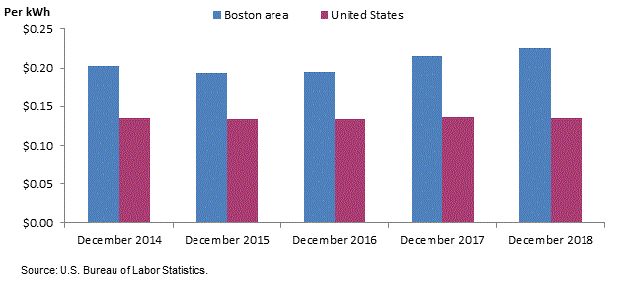Like these posts on LED lighting?
Click here to see them all.
I’ve been thinking about ways to reduce our carbon footprint. Especially since some of the stuff we’re doing in retirement, like traveling, adds to it. We’re already doing a lot: super-insulating the house, upgrading our HVAC and hot water and some of our appliances to high-efficiency units, selling the 2nd car and doing remarkably little driving. No electric car yet, no solar panels yet – but we’re thinking about that stuff. Oh: biggest low-carbon move? No kids. But I digress…

We have a mid-sized house, but we have a ton of lighting. We are art collectors, and we’ve learned over a lifetime of collecting that great art only looks as good as its lighting. We like indirect light in much of our home, and that means we need more of it to light the way. And we did a lot of our renovations in the 1990s and early 2000s, when there was no practical choice except incandescent lights, or daylight color florescent tubes. Compact fluorescents? Gimme a break!
For the most basic lighting tasks, LEDs have been up to the job for awhile. But for demanding tasks where light quality really matters, LEDs have been unable to match the superior quality of incandescent and halogen light sources until very recently. But finally, we’re getting there! That is why I’m doing this now – until the last couple years, whenever I tried LED replacements, they sucked. Now, in many cases their light quality matches or exceeds the old, mature technologies.
LEDs have another big advantage besides less power: they last as much as 25 times as long as equivalent incandescents – 25,000 hours for an LED bulb that directly replaces a 60W incandescent bulb at 1000 hours. That’s 23 years at 3 hours per day.
Dad: “How many politicians does it take to change a light bulb?”
Kid: “Change a light bulb?”
But when I started looking into this, there was no getting around the fact that it was going to cost a lot. We could do it piecemeal but, what fun is that? We have roughly:
- 80+ 50 watt halogen track heads: 4000W
- 40 recessed ceiling fixtures with flood or reflector bulbs, 65W to 100W each: 2800W
- 20 florescent tubes, mostly 48 inch ones: 800W
- 40 wall or ceiling fixtures or lamps, with 50W to 150W 3-way bulbs: 3500W
- 3 large built-in shelving systems, strip lights or mini-tracks: 600W
- 3 runs of under-cabinet lighting: 400W
- Landscape lighting both front and back – lots of it: 2000W

More than 14,000W of lights. Gets bright if you turn them all on – which we never do. About the same as a 4 ton A/C unit. I estimate that our lighting, even though we rarely have much of it turned on at a time, is using maybe 10% to 20% of our electricity usage. That is more than the 6% of electricity consumption that lighting accounts for in a typical U.S. household. I’m guessing we’re a bit higher since we’re so keen to light things up in special ways.
A bunch of these have already been converted as we did renovation projects. But quite a lot remains to be done. We know we’ll get that priceless good feeling of helping to curtail climate change if we do this. But priceless does not mean zero price! What will it cost, and how long a payback?
For simplicity, I’m going to pretend we haven’t done anything yet, so we can figure out whether this conversion makes any financial sense. LEDs are expensive. High quality LED replacements (not “ewwww thats ugly, send it back!”), run between about $0.01 per lumen for basic standard base bulbs, up to $0.18 per lumen for advanced, specialty fixtures with integrated LED engines. Let’s assume the price per lumen averages out to what a high quality track light bulb replacement costs – about $0.046 per lumen. Let’s also assume that LEDs average out to about 8x the efficiency of what they replace, and that we run about 10% of our lights at any time for about 8 hours a day. That is probably high, but gotta pick a number, right?

We have about 120,000 lm of lighting in our home, which would cost in the ballpark of $5,500 in LEDs. At $0.225/kWh for electricity in Massachusetts (3rd highest in the U.S.), our old lights (1.4kW x 8h/day x 365 days) cost about $919.80 per year in electricity. If we replace all our lighting with LEDs, that much light costs about $114.98 per year. We would save $804.83 in electricity costs per year. $5,500 / $805 = about a 6.8 year payback. Not terrible – I was expecting a lot worse. And much lower maintenance, and we do something to save the planet.
Ok, I’m sold!
Credits:
CFL Bulb photo CC-by: http://en.wikipedia.org/wiki/User:PiccoloNamek – http://en.wikipedia.org/wiki/File:Compact-Flourescent-Bulb.jpg


Love the detailed analysis.
Very enlightening.
LikeLike